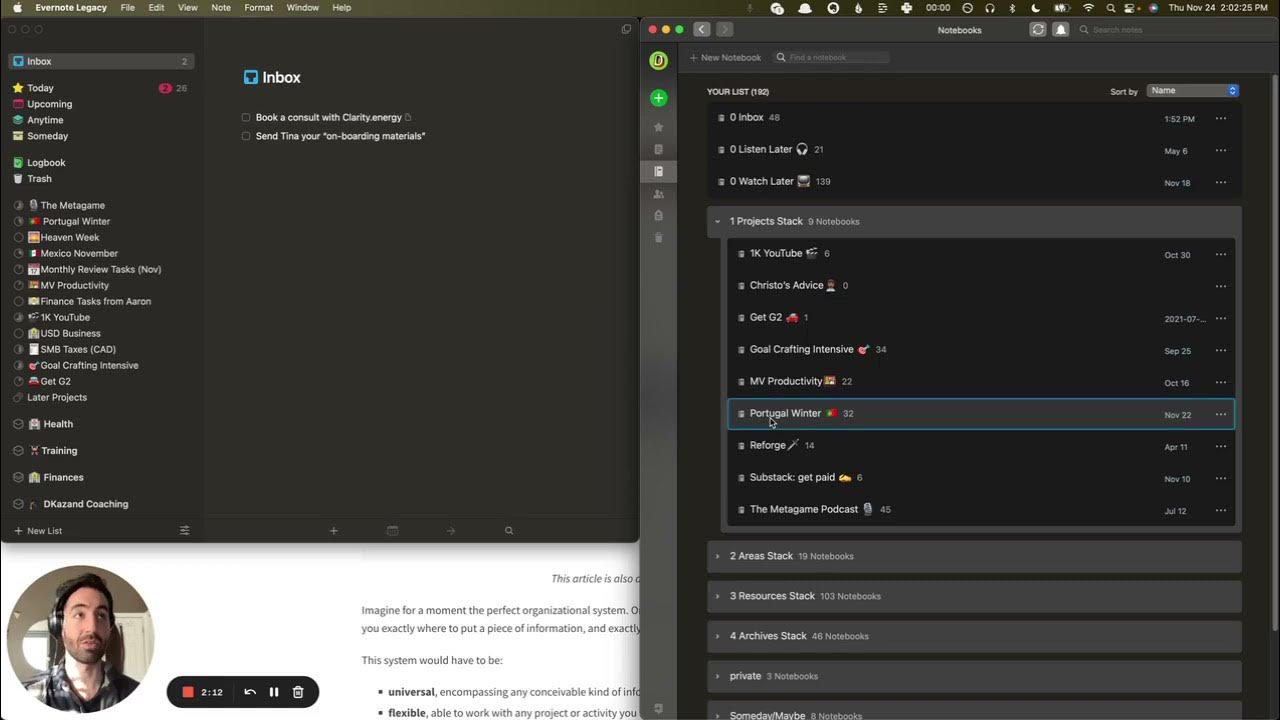Getting Things Done (GTD) by David Allen - Animated Book Summary And Review
Summary
TLDRThis script introduces the Getting Things Done (GTD) system, a five-step framework to manage tasks and ideas effectively. It emphasizes capturing daily tasks and information, processing them into actionable items, organizing them by project, time, and context, and reviewing regularly to maintain clarity. The goal is to declutter the mind, ensuring important events, like a friend's birthday, aren't missed, and to achieve a state of calm productivity.
Takeaways
- 😀 The human brain is not designed to hold onto information; it's better at generating ideas.
- 📅 Forgetting important events like a friend's birthday can happen due to the overwhelming demands on our attention.
- 📝 The Getting Things Done (GTD) system is a framework to help manage tasks, ideas, and projects effectively.
- 🔍 The first step in GTD is 'capturing' all the information and ideas that come your way daily.
- ❓ Processing involves determining if captured items are actionable and deciding whether to do them immediately or schedule them for later.
- 🗂 Organizing actionable items involves categorizing them by project, time, and context to prioritize and sequence tasks.
- 📆 Non-actionable items can be discarded, kept for reference, or deferred for future consideration.
- 🔄 Regular reviews are crucial to maintain the organization of tasks and ensure alignment with goals.
- 🚀 The 'engage' step is about executing the tasks, making sure to capture and process new information as it comes in.
- 🧘♂️ Adopting the GTD system can lead to a state of calm and collectedness, similar to a zen master in meditation.
- 🎉 The script ends with a reminder of the benefits of using GTD, ensuring important events like birthdays are not forgotten.
Q & A
What is the main problem the speaker is addressing in the script?
-The speaker is addressing the issue of forgetfulness and the inability to keep track of important tasks and ideas due to information overload and a busy lifestyle.
What is the Getting Things Done (GTD) system?
-The Getting Things Done (GTD) system is a framework designed to help individuals keep track of tasks, ideas, and projects by organizing their thoughts and actions effectively.
What are the five steps of the GTD system?
-The five steps of the GTD system are: 1) Capture, 2) Process, 3) Organize, 4) Review, and 5) Engage.
What does 'capture' mean in the context of the GTD system?
-In the context of the GTD system, 'capture' refers to the act of recording all ideas, tasks, projects, and other information that comes your way so that you don't have to keep them in your brain.
How does the GTD system help with actionable items?
-The GTD system helps with actionable items by determining if they can be completed in 2 minutes or less, in which case they should be done immediately, or if they need to be scheduled for later and added to an action items list.
What should you do with non-actionable items according to the GTD system?
-With non-actionable items, you have two choices: discard them if they are not needed, or keep them for reference in case the information is required in the future.
How does the GTD system suggest organizing action items?
-The GTD system suggests organizing action items based on three criteria: by project, by time, and by context, allowing for efficient prioritization and execution.
What is the importance of regularly reviewing your items in the GTD system?
-Regularly reviewing your items in the GTD system is essential to ensure that everything is in its proper place, to make adjustments as needed, and to keep your system running smoothly.
What is the final step in the GTD system, and what does it involve?
-The final step in the GTD system is 'Engage,' which involves actually executing the tasks and actions that have been organized and planned during the previous steps.
How can the GTD system help prevent forgetting important events like a friend's birthday?
-The GTD system can help prevent forgetting important events by capturing all relevant information, processing it to determine actionability, organizing it on a calendar or action list, and regularly reviewing to ensure nothing slips through the cracks.
What is the role of the 'someday maybe' list in the GTD system?
-The 'someday maybe' list in the GTD system is used to store ideas or tasks that are not actionable at the moment but may be considered for action in the future, allowing you to revisit them at a later date.
Outlines

هذا القسم متوفر فقط للمشتركين. يرجى الترقية للوصول إلى هذه الميزة.
قم بالترقية الآنMindmap

هذا القسم متوفر فقط للمشتركين. يرجى الترقية للوصول إلى هذه الميزة.
قم بالترقية الآنKeywords

هذا القسم متوفر فقط للمشتركين. يرجى الترقية للوصول إلى هذه الميزة.
قم بالترقية الآنHighlights

هذا القسم متوفر فقط للمشتركين. يرجى الترقية للوصول إلى هذه الميزة.
قم بالترقية الآنTranscripts

هذا القسم متوفر فقط للمشتركين. يرجى الترقية للوصول إلى هذه الميزة.
قم بالترقية الآنتصفح المزيد من مقاطع الفيديو ذات الصلة
5.0 / 5 (0 votes)






